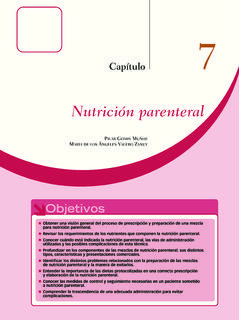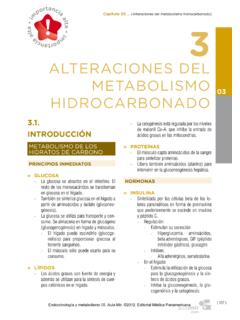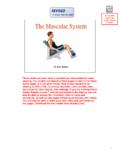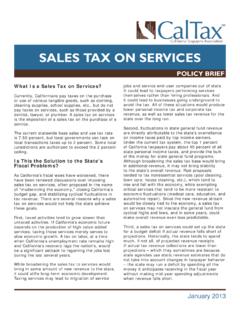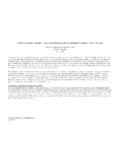Transcription of Chapter 2 Vasopressors and Inotropes
1 Kane-Gill and J. Dasta (eds.), High-Risk IV Medications in Special Patient Populations,DOI: , Springer-Verlag London Limited 2011 IntroductionMedication errors and adverse drug events occur more frequently in the intensive care unit compared to general care Adverse drug events become more likely as patients receive more medications. Sentinel events and medication errors are more common as the number of failing organs ,3 Vasopressors are fre-quently associated with adverse drug events and they are considered high-alert drugs by the Institute of Safe Medication Practices due to their increased potential to cause Vasopressors and Inotropes are used in patients with the highest acuity and under stressful situations which adds to the potential for errors. In addi-tion, dosing guidelines, ranges and units are not always standardized across agents at specific institutions or for a certain agent across institutions. The literature is disparate with respect to dosing recommendations.
2 With the exception of vasopres-sin, we report the dosing of these agents in a weight-based manner. This should enhance dosing consistency to help minimize errors. We encourage institutions to adopt this dosing scheme to reduce discrepancies associated with their administra-tion. Moreover, using a weight based dosing strategy in an era of increasing obesity raises the question of whether actual, adjusted or ideal body weight should be used when administering Vasopressors . No data are available to select an appropriate weight and trials evaluating the use of Vasopressors rarely report the body weight used in cases of obesity. With the exception of milrinone, we encourage the use of ideal body weight for all weight-based dosing strategies because these agents pos-sess short half-lives, rapid onsets, and low volumes of distribution but may be asso-ciated with severe adverse events when higher weights are used resulting in higher R. MacLaren (*) Department of Clinical Pharmacy, University of Colorado Denver School of Pharmacy, Aurora, CO, USA e-mail: 2 Vasopressors and InotropesScott W.
3 Mueller and Robert MacLaren Mueller and R. MacLaren70doses in heavier patients. Moreover, these agents are rapidly titrated to clinical response, so starting at lower doses based on ideal body weight is Chapter discusses the safety concerns of select Vasopressors and Inotropes encountered in intensive care units. Published adverse reactions with these agents are (DOB)Dosing ConsiderationsDobutamine s (DOB) clinical activity is primarily mediated by beta (b)-receptor agonism. Frequently observed effects of DOB include increased cardiac output (CO), decreased systemic vascular resistance (SVR), and tachycardia. Commonly cited dosing ranges of 2 20 mcg/kg/min may need to be exceeded to achieve adequate response which may enhance the likelihood of adverse events. DOB doses of 40 mcg/kg/min have been reported but higher doses may be needed depending on the clinical The increased risk of adverse events at elevated doses must be balanced with potential benefits of the higher dose.
4 Lack of adequate fluid resuscitation prior to or concomitant use of other Inotropes may increase the risk of adverse : Data are not available for use in critically ill obese patients. However, since many institutions use weight based dosing for DOB, ideal body weight should be used to avoid excessive dosing of a drug with low volume of distribution and short half-life in over weight patients. The rate should be verified to ensure the cor-rect dose is being : There are no reports of dosing considerations in underweight or nutritionally depleted patients. Dobutamine doses should be titrated to the lowest dose required for goal hemodynamic Injury: Dobutamine is mainly metabolized by the liver and catechol-O-methyl transferase (COMT). The pharmacokinetics of DOB in patients with renal insufficiency has not been studied. Dobutamine does not require specific dose changes for renal Renal Replacement Therapy: The pharmacokinetics of DOB has not been studied.
5 Dose adjustments should be titrated to hemodynamic Dysfunction: Dobutamine is metabolized by COMT and by conjugation to inac-tive metabolites. Dose adjustments are not necessary for hepatic : Therapeutic hypothermia may decrease enzymatic metabolism of medications including DOB leading to higher serum concentrations. The clinical significance of this is unknown, therefore no initial dose adjustments are recom-mended and dose adjustments should be based on hemodynamic Vasopressors and InotropesSafety ConcernsSafety concernRationaleComments/recommendations ExtravasationWhile DOB displays b-selective inotropic and vasodilatory properties, the L-enantiomer possesses a-agonistic Therefore, extravasation may cause vasoconstrictive related adverse events. Few case reports have been published regarding DOB extravasation, treatment, and outcomes10 DOB should be administered via a central catheter whenever possible. If not readily available, a central catheter should be placed as soon as possible.
6 If extravasation and vasoconstric-tion are evident, phentolamine (10 mg/10 ml NS) may be given in and around the extravasation site via hypodermic syringe11 Tachyarrhythmia/myocardial ischemiab-adrenergic effects may contribute to tachycardia, tachyarrhythmia, and potentially myocardial ischemia. Effects may be greater in the elderly, those with preexisting cardiac ischemia or dysrhythmias, hypov-olemia, or when used in combination with other Inotropes and vasopressors12,13 Dose related increases in heart rate are predictable. Doses exceeding 20 mcg/kg/min are more likely to cause tachyarrhythmias and produce ischemic changes on electrocardiogram. When DOB was used in combination with norepinephrine (NE), lower heart rates were noted compared with other Vasopressors Cardiac monitoring should include telemetry for heart rate and rhythm and serial troponin concentrations if ischemia is suspected. Echocardiography may be requiredGlucose abnormalitiesAdministration of sympath-omimetics may cause gluconeogenesis and insulin resistance15 DOB has been shown to cause hyperglycemia in animal studies.
7 Serum glucose should be monitored and corrected with insulin as clinically indicated15,16 HypotensionDOB may cause hypoten-sion due to b-agonist induced vasodilationHypotension may occur in states of hypovolemia leading to rebound Blood pressure should be frequently monitored and verifiedAllergic reactionDOB contains sodium bisulfiteAllergic reactions to bisulfite may occur. Eosinophilic myocarditis has been linked to DOB White blood cell count with differential should be monitored(continued) Mueller and R. MacLaren72 Safety concernRationaleComments/recommendations Drug-drug interactionsDOB is metabolized by COMT. While pharma-cokinetic drug interac-tions between COMT inhibitors (entacapone, tolcapone) may enhance DOB activity, close monitoring and frequent dose titration to the lowest effective dose is recommendedPharmacodynamic interactions such as the concomitant administra-tion of other Vasopressors and Inotropes may increase DOB activity and enhance the likelihood of adverse effects.
8 Interactions should not deter the use of additional agents in patients requiring supplemental therapy to reach hemodynamic goals. Medications that alter blood pressure (vasodilators, negative Inotropes , etc.) may enhance or reduce the effective-ness of DOB. DOB should be administered through a dedicated lumen of a central venous catheterDOB is alkaline labile. Caution should be used when coadministering medications through shared lines with DOBD opamine (DA)Dosing ConsiderationsDopamine s (DA) clinical activity is dose-dependent. Lower doses of 3 mcg/kg/min primarily stimulate dopamine receptors, intermediate doses of 3 10 mcg/kg/min stimulate beta (b)-receptors, and higher doses 10 20 mcg/kg/min stimulate alpha (a) Mixed actions may occur at doses above or below these com-monly cited ranges. DA doses in excess of 50 mcg/kg/min have been reported but higher doses may be needed depending on the clinical situation. The increased risk of adverse events at elevated doses must be balanced with diminishing potential benefits of the higher dose.
9 Additional or alternative vasopressor support may be needed if cardiovascular goals are not met within the standard dosing range. Lack of adequate fluid resuscitation prior to or concomitant vasopressor use may increase the risk of adverse : Data are not available regarding dosing in critically ill obese patients. However, since DA is dosed in units based on weight, ideal body weight should be used to avoid excessive dosing of a drug with low volume of distribution and short half-life in over weight patients. The rate should be verified to ensure the correct dose is being : There are no reports of dosing considerations in underweight or nutritionally depleted patients. Dopamine doses should be titrated to the lowest dose required for goal hemodynamic Vasopressors and InotropesKidney Injury: Only a small amount of DA is excreted unchanged in the urine. Dopamine has been used at low doses in cases of acute or chronic renal insuffi-ciency in attempts to increase urine production or prevent worsening renal function.
10 The results of a large study of critically ill patients with acutely worsening renal function showed no benefit to low-dose or renal-dose Dopamine does not require specific dose adjustments for renal insufficiency. The dose should be titrated to hemodynamic Renal Replacement Therapy: Dopamine does not require specific dosage adjustments and should be titrated to hemodynamic response during Dysfunction: Dopamine is metabolized by COMT and monoamine oxidase (MAO) to inactive metabolites. Dose adjustments are not necessary for hepatic : Therapeutic hypothermia may decrease enzymatic metabolism of medications including DA leading to higher serum concentrations. The clinical sig-nificance of this is unknown, therefore no initial dose adjustments are recommended and dose adjustments should be based on hemodynamic ConcernsSafety concernRationaleComments/recommendations ExtravasationDA possesses dopamine, b, and a receptor activity which can cause vasoconstriction and skin sloughing, ischemia, gangrene and necrosis if extravasation occurs.



